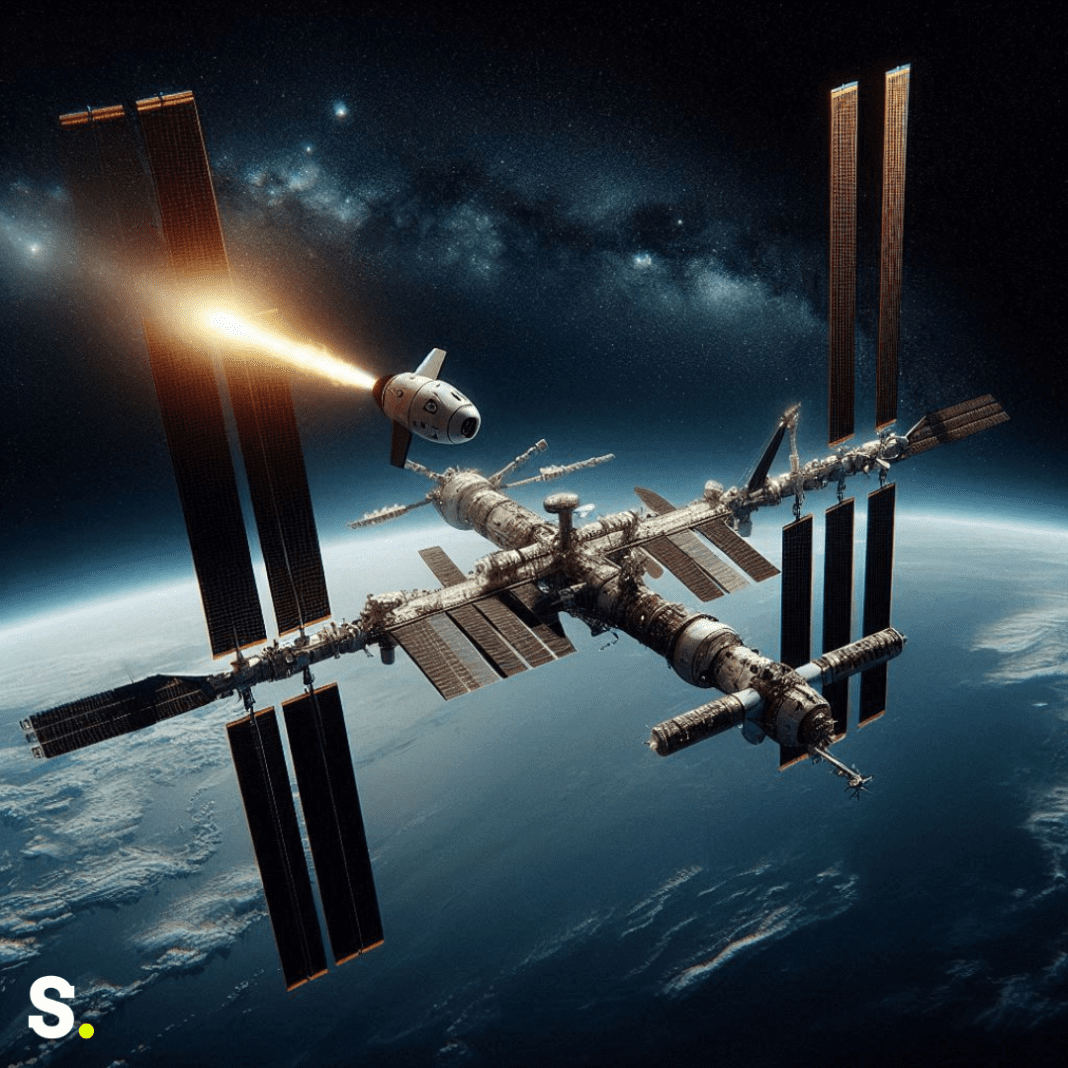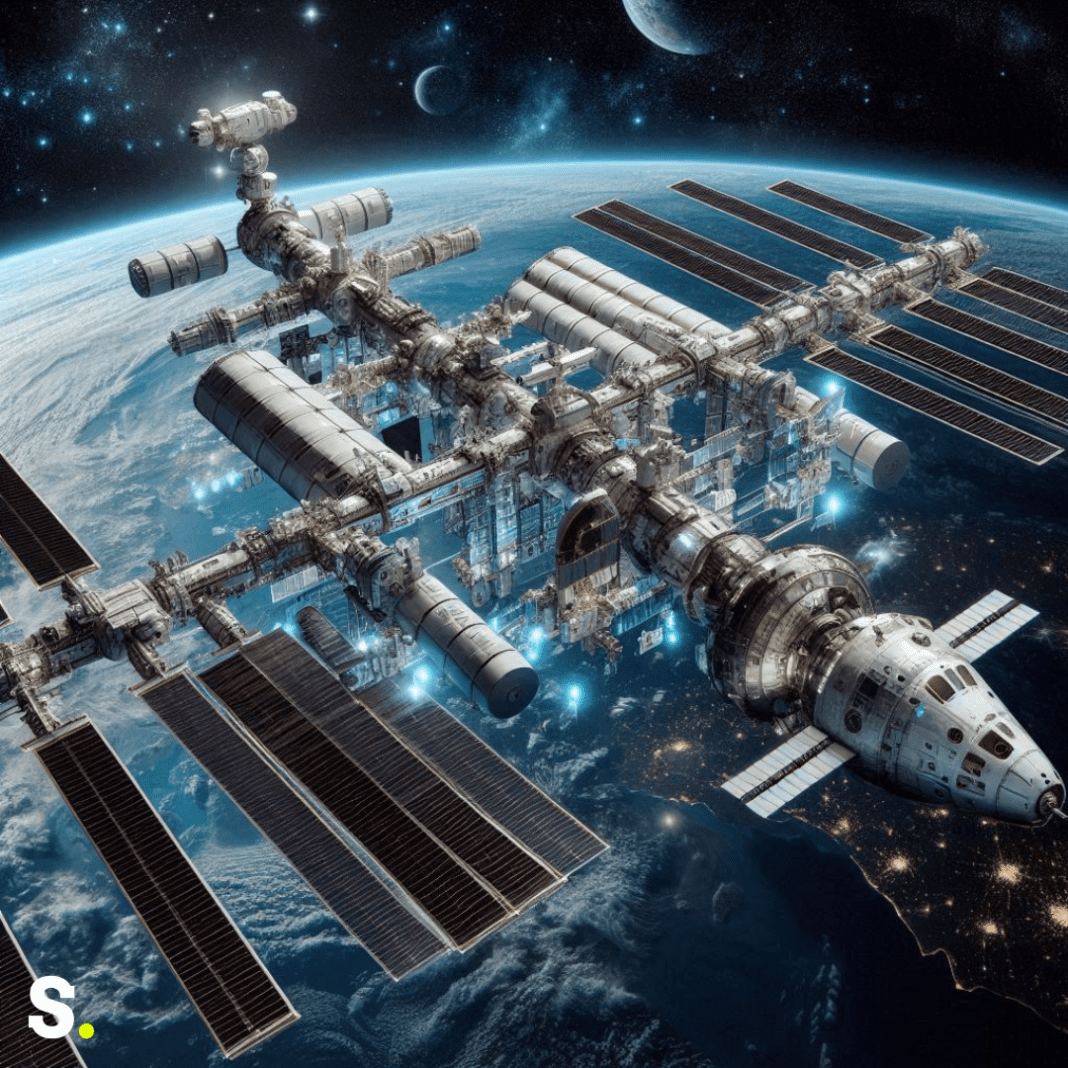NASA has announced a groundbreaking plan to retire the International Space Station (ISS) by 2030. This plan, costing around $1 billion, is a well-thought-out strategy to ensure the safe return of the ISS to Earth. The ISS, which has been orbiting our planet for over two decades, will undergo a carefully controlled descent, guided by a space tug operated by SpaceX. This ambitious project is designed to ensure that the ISS burns up in the Earth’s atmosphere, with any remaining debris landing in a remote oceanic area, far from human habitation.
Gradual Descent and the Role of SpaceX’s Dragon Tug
The International Space Station is scheduled to deorbit in 2026. At that time, the station will gradually start its descent from its current orbit, which is about 250 miles above the Earth’s surface. The goal is to lower the ISS to an altitude of 200 miles over several years. This slow descent will allow for careful monitoring and adjustments as needed to ensure the station’s safe return to Earth.
As the International Space Station continues to descend, it will eventually reach an altitude of 175 miles. At this point, a specially modified SpaceX Dragon capsule will dock with the station. This Dragon capsule will act as a space tug, tasked with guiding the International Space Station through the final stages of its descent. The space tug will perform a series of complex maneuvers to further lower the ISS’s altitude, preparing it for re-entry into the Earth’s atmosphere.
The space tug will provide a last push to put the International Space Station into a descent trajectory when it reaches a crucial point at 175 miles. This push will set the International Space Station on a path that will cause it to enter the Earth’s atmosphere at a speed of approximately 17,000 miles per hour. The intense heat generated during reentry will cause most of the International Space Station to disintegrate, ensuring that only a small amount of debris will reach the Earth’s surface.
Point Nemo: The Final Resting Place of the ISS
NASA has carefully selected a remote region of the Pacific Ocean known as Point Nemo as the target landing site for any remaining debris from the International Space Station. Said to as the “spacecraft graveyard,” Point Nemo is the farthest point on Earth from any inhabited territory. In order to reduce any possible risk to property or human life, this location was selected.
It is anticipated that 40–100 tonnes of debris will make it through the reentry process and land close to Point Nemo. This debris will consist of larger pieces of the International Space Station that are too massive to burn up completely during reentry. By targeting this remote area, NASA ensures that the final phase of the ISS’s mission will pose minimal danger to people and the environment.
The End of an Era and the Legacy of the ISS
The decision to deorbit the International Space Station marks the end of a significant chapter in human space exploration. After 24 years of continuous operation, the ISS has become a symbol of international cooperation and scientific achievement. However, the station’s age is beginning to show. Many of its systems and hardware are now past their operational lifespan, and increasing issues such as structural leaks have raised concerns about the station’s continued safety in orbit.
NASA’s shift in focus towards new space initiatives, including the Lunar Gateway project, has also played a role in the decision to retire the International Space Station. As NASA redirects its funding and resources toward missions aimed at exploring the Moon and Mars, the ISS is no longer seen as a priority. Nonetheless, the lessons gained from the ISS’s upkeep and study will carry on its legacy. These lessons are expected to be invaluable as NASA transitions its human spaceflight focus toward more ambitious targets in the future.
NASA’s $1 billion deorbit plan for the International Space Station is a carefully orchestrated mission that aims to safely bring the station back to Earth by 2030. The plan involves a gradual descent starting in 2026, with the final stages of the mission being carried out by a SpaceX Dragon capsule acting as a space tug. The selected landing site for any remaining debris is Point Nemo, a remote region of the Pacific Ocean, chosen to minimize risk. As the ISS reaches the end of its operational life, NASA is turning its attention to new space exploration goals, marking the end of an era in human spaceflight.




